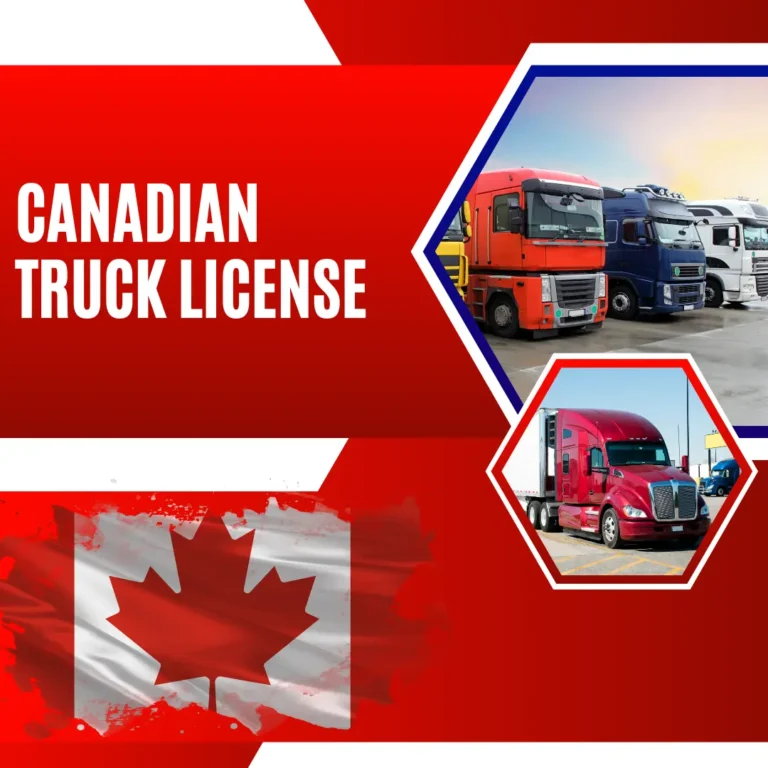How do I pass the G1 and G2 tests?
Ready to feel the breath of fresh air while driving? For this, it is mandatory to pass the G1 and G2 tests. The very first step is to embrace the knowledge about driving lessons, prepare and then conduct a test. This article focuses on passing the G tests in Canada.
What is the G-road test?
The “G” test is the Canadian equivalent of the test required to obtain a Class G full driver’s license. The G license is part of the graduated licensing system that many Canadian provinces use. The graduated licensing system was designed to introduce new drivers to road rules and to gain experience in a controlled way.
Here’s a general overview, for instance, of the graduated licensing in Ontario that uses the G classification.
- G1 License (Learner’s Permit) The first stage is where new drivers have to pass a written exam in order to get a G1 license. A G1 license allows drivers to drive only with a fully-licensed driver sitting in the front passenger seat
- G2 Licence (Trial License): Following a successful road test, drivers who have passed the G1 stage can move on to G2. G2 drivers are allowed to drive individually, but they still face some restrictions. For example, a blood alcohol content of 0.05 is required.
- G License: This is the final stage, a driver’s licence with no margins. The driver must pass a test on the road that measures their knowledge and skills in driving and after this, they will be given a license. You can also call it the “G road exam.”
It is important to know the requirements and rules in your province before you apply for a license. This information is only a guideline, and it may not include all the details in each province or territory.
WHAT IS THE G1 and G2 Tests Phase?
To get your license, you must pass the G1 test. You may need to pass this test to be able to drive, while the two other tests are vehicle road tests. This is an information-based, handwritten exam consisting of the basic traffic sign details and principles of a province’s roads. This carved test is very vital.
Some of the steps that you need to be sure about are:
Test format: G1 tests are usually multiple-choice exams. The questions found in the sum and the score obligatory to clear may vary depending on your jurisdiction.
Booking Test You can schedule the G1 test through the official site of your provincial transport authority, or you can visit a testing center.
The Passing Grade: To pass the G1 exam, individuals must obtain a minimum score. The grade required to pass the G1 test may vary depending on your jurisdiction.
Upgrade process: The G1 phase license holder must adhere to the rules and regulations associated with this phase. After a certain waiting period, an individual must pass a road exam to progress to the G2 licensing level.
Also, Follow the rules and requirements
- Who is the person who customs this test?
- Written assessment: Pattern
- How do you prepare for the test?
- Sources of its preparation
- Conduction Location
- Identification Essentials
- How to pass the test

G1 is a restricted license.
The G1 license is the most obstructive one.
Supervised driving:
The G1 holder must be accompanied at all times by an experienced driver with a full driving license and four years of experience. The blood alcohol level of the accompanying driver must not exceed 0.05%
Seat Belt Requirements:
All passengers, including the driver of the G1, must wear a safety belt.
Blood Alcohol Content:
G1 drivers should have zero content of alcohol in their blood while driving.
Passenger Restrictions:
The number of passengers that G1 drivers can transport is limited. The amount of passengers is narrow due to seat belts that are in use.
Time to Drive:
A G1 driver can’t drive between midnight and 5 am.
Electronic Devices
Drivers of G1 vehicles are prohibited from using handheld electronic devices when driving.
Highway Prohibitions
G1 drivers cannot drive on highways in the 400 series (such as 401, 407) or high-speed expressways.
Driver’s Education Course
G1 drivers who complete a driver education course that is approved can reduce their waiting period from 12 months to 8 months. Please note that other provinces may have slightly different rules for the respective levels of learner’s licenses. For the most up-to-date information, always refer to the official handbook of drivers or the website of the relevant provincial transport authority
G2 Phase test
In Ontario, Canada, the G2 test is a road test that drivers must pass to graduate from the G1 (learner’s permit) level to the G2 (probationary license) level. The G2 test assesses a driver’s ability to operate a vehicle safely in various traffic conditions. Successfully passing this test allows drivers to enjoy increased driving privileges compared to the G1 level.
The G2 test is being administered in Ontario. Here are the key facts:
Eligibility for the G2 Test:
G1 drivers who wish to take the G2 test must hold their G1 licence for at least a year.
Booking the G2 Test:
G1 drivers may book the G2 exam through the Ontario Ministry of Transportation’s official website or at a drive test center.
Road Test:
The G2 road exam measures a driver’s ability to handle various traffic situations and perform different maneuvers. The G2 road test includes elements like turning, parking and merging onto highways.
Vehicle Requirements
Testers of the G2 must bring an insured vehicle that is mechanically sound to their road test. The vehicle must have a current safety standard certificate.
Criteria for passing:
Drivers must show safe and effective driving techniques to pass the G2 test. Failures are often due to unsafe driving, failures to follow traffic laws, or a lack of understanding of traffic situations.
Why do you fail the driving test?
There are many reasons for individuals to fail their road test. The reasons for failure can vary according to the examiner and jurisdiction. However, there are some common causes.
A major mistake during the road test can lead to an immediate failure. For example, failing to yield right-of-way, running through a red signal, or creating a dangerous situation.
If you are unable to control your vehicle, like having issues with steering, braking, or acceleration and failing to comply with traffic laws such as speed limits, stop signs and other regulations, then your test result will be delayed. Unsafe driving habits, such as tailgating or erratic lane changing, can lead to failure. Failure can also result if you don’t regularly check your mirrors, scan intersections correctly, or are unaware of the surrounding are
Parking errors and maneuver errors are important to learn as they will not result in a lack of ability to perform maneuvers while driving, such as parallel parking, 3-point turns or parking. Anxiety or extreme nervousness can affect the performance of a driver. It is important to remain composed and attentive throughout the test.
Sometimes you fail to use your turn signals, or if you do so incorrectly, points can be deducted from your score or even result in failure. A vehicle that has equipment problems, such as brake lights and turn signals that are not working, can lead to various accidents, deducting your points in the test. It is compulsory for you to practice; otherwise, unpreparedness can lead to the failure of your test. Unaware of the rules, signs, and road signs or failing to continue practicing your driving skills will not help you drive in the future.
G LICENCE OBLIGING TIPS For G1 and G2 Tests
It is essential that you drive every day prior to your G1 and G2 tests. You should try to change the time so you feel comfortable, no matter when you schedule your test. Your confidence level will decide how you will perform in your test. Here is some more helpful G road test advice:
- Driving instructors can be very helpful. You should be diligent about your driving skills. You can feel more assertive about taking the test.

- Check that your vehicle’s brakes, turn signals and fuel are working. Before leaving, check your vehicle’s brakes and turn signals.
- Highway traffic rules are made up of half of the road test. Nearly half of your road test will be devoted to highway traffic. Be sure to spend time on the highways practicing and studying all highway traffic laws and signs before taking the test.
- Review the handbook for drivers. To ace the exam, review road signs and driving regulations.
- Turn your mobile device off. If you accept a text or a phone call during your test, it may cause you distraction.
You can retake the test, if you fail on your first try. If you fail the G road test, and your license expires, you must start the process all over again. It means you will need to retake the knowledge G1 and G2 tests and start with a G1 license.
We at assure wish all the best to those who are preparing for their G license road test! Our G road test tips will hopefully help you prepare for this important milestone. Once you pass your road test and contact us, we will help you get the right insurance coverage to begin this exciting new chapter in your life.
Why is it difficult to pass the driving test?
It can be challenging to pass a driving test due to factors like nervousness, stress, complexity of traffic laws, needing to master different driving skills, strict testing criteria and unfamiliarity with the test route. The difficulty in passing a driving test is also due to a lack of preparation, distractions from outside sources, and difficulties with risk perception. To succeed, you need to have a good understanding of the rules and be able to remain calm and focused.
What are the major driving errors?
The following are some of the most common driving mistakes that can lead to a test failure:
Failure to yield right of way
Stop signs or red lights are not to be ignored.
Driving practices that are unsafe or erratic.
Poor vehicle control including steering, braking or acceleration issues.
Inadequate observation such as failing to check blind spots or the mirrors.
Violation of traffic laws including speeding and improper lane changes.
Making critical errors during maneuvers like parking or turning.
Ignoring the instructions of an examiner.
Driving with Equipment Violations
Insufficient awareness of the dangers and poor risk perception.
Are driving examiners strict or not?
Driving examiners vary in strictness but generally follow a standard set of criteria. The assessments are based on the established rules and regulations and aim to ensure competence and safety. Although some examiners are perceived as being strict, they focus on the driver’s ability and willingness to follow traffic laws. The perceived severity of an examiner’s style and how consistently they apply the evaluation criteria can affect their perceived strictness






